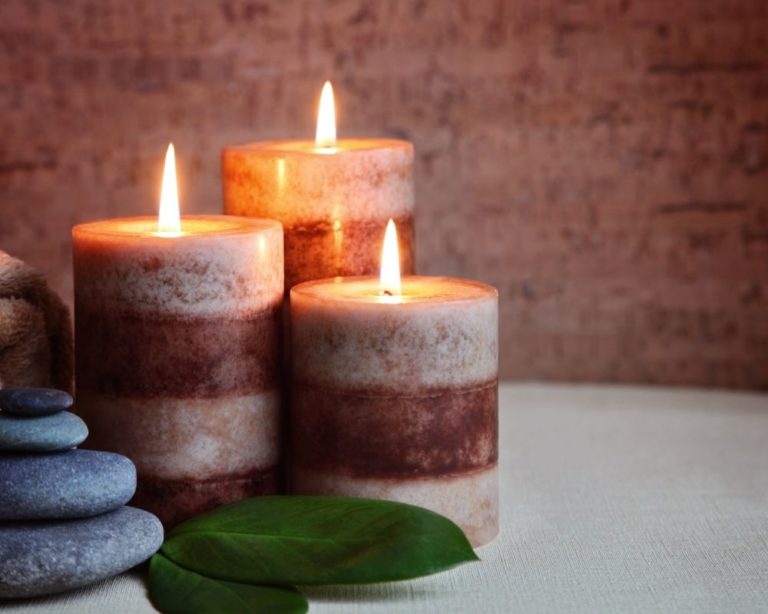
Cheryl Groskopf, LMFT, LPCC
Holistic Anxiety, Trauma, and Attachment Therapist in Los Angeles
What is Fearful Avoidant Attachment?
Attachment Therapist Los Angeles
Fearful avoidant attachment is a type of attachment style where an individual has conflicting desires for both closeness and independence in their relationships. People with this attachment style often struggle with forming close, intimate connections with others. They are caught in a constant tug-of-war between the fear of being too dependent on someone, while also having fear of being rejected or abandoned.
"It's like having one foot on the gas pedal, wanting to move closer, and the other foot on the brake, wanting to pull away."
If you’re experiencing fearful avoidant attachment, you may feel overwhelmed by your own emotions, and find it challenging to trust others fully. Deep down, you want a deep and meaningful relationship, but at the same time, you may be afraid of the vulnerability and potential pain that comes with it. It can be a tough spot to be in, but with self-reflection and therapeutic work, we can begin to navigate & find a healthier balance between closeness and independence.

Attachment Therapy in Los Angeles
How Therapy Can Help Secure Your Attachment
Attachment therapy in LA provides a safe and supportive environment to explore fears, confront process traumas, and develop new ways of relating to yourself and others. Here are a few ways therapy can help you transform your attachment style from fearful avoidant to secure:
Creating a Safe Therapeutic Space:
Fearful avoidant individuals often struggle with trust and vulnerability due to past experiences. Fearful Avoidant Attachment Therapy prioritizes creating a safe and nurturing therapeutic space where you can gradually feel comfortable sharing your emotions, thoughts, and fears without fear of judgment or rejection
Identifying Attachment Patterns and Beliefs:
Therapy begins by helping you gain insight into your attachment patterns + the underlying beliefs that drive your thoughts, feelings, and behaviors. By examining these patterns, you can start to recognize the ways in which your fears and defenses impact the ability to form secure attachments.
Exploring Early Attachment Experiences:
Fearful avoidant attachment DOES NOT always come from childhood trauma or neglect. You can have great parents and a great childhood, and still have this attachment pattern. However, fearful avoidant attachment may arise from negative interactions with caregivers unresolved childhood traumas. Fearful Avoidant Attachment Therapy allows you to bravely explore these early experiences, process emotions, and reframe your narrative. By gaining a new understanding of past events and their impact on present relationships, you can begin to heal and integrate these experiences into your personal story.
Connect with an Attachment Therapist in Los Angeles
Meet Cheryl Groskopf, LMFT, LPCC
As an attachment therapist in Los Angeles, my approach is rooted in empathy, understanding, and a commitment to walking alongside you on your journey towards healing. Together, we will walk toward on a path of discovery and growth. We will explore the deep-seated issues that contribute to your fearful avoidant attachment.
We’ll start by uncovering the root causes of your attachment style. This involves diving into your early life experiences and upbringing to explore the underlying beliefs and fears that have been shaping your relationships.
Next, we’ll explore and reframe any negative beliefs you’ve been carrying. It’s easy to get caught up in self-limiting beliefs that limit your ability to form secure connections. Through compassionate exploration, we’ll identify these patterns and work together to transform them. Our goal is to start exploring new possibilities and ways of relating to others that are grounded in trust and authenticity.
The Therapeutic Process: A Journey to Secure Attachment
Building a secure attachment is at the foundation of our work together. We’ll focus on building healthy communication skills, practice emotional vulnerability, and self-compassion. These steps are So important in developing a more secure attachment style – one that promotes intimacy, trust, and meaningful connections.
Fear of intimacy doesn’t have to define your future relationships. With the right support and guidance, it’s possible to navigate the complexities of attachment and move towards a place of security and fulfillment. Let’s take this journey together, and transform challenges into opportunities for growth and connection. Are you ready?
How to Fix Fearful Avoidant Attachment
If you find yourself experiencing fearful avoidant attachment in your relationships, it’s important to know that you can work on improving this pattern and develop healthier, more fulfilling connections with others. Fearful avoidant attachment is characterized by a deep fear of both intimacy and abandonment, leading to a tendency to push people away while also yearning for closeness. Here are some practical steps to help you address and overcome fearful avoidant attachment:
Self-Awareness:
Developing self-awareness is crucial in understanding your fears and the patterns that drive your avoidant behaviors. Take time to reflect on your thoughts, feelings, and reactions in relationships. Notice any recurring patterns of avoiding vulnerability or pushing people away when they get too close. This awareness will provide a solid foundation for growth.
Challenge Negative Beliefs:
Fearful avoidant attachment often stems from negative beliefs about yourself and relationships. Challenge these beliefs by identifying evidence to the contrary. Remind yourself that not all relationships will end in abandonment and not all intimacy leads to pain. Recognize that everyone has flaws and that you are worthy of love and connection.
Build Trust Slowly:
Establishing trust is essential when working through fearful avoidant attachment. Begin by building trust within yourself. Trust your own ability to cope with emotions and setbacks. Then, allow others into your life gradually. Start with small steps, such as sharing your thoughts or feelings with a close friend, and gradually increase vulnerability and intimacy over time.

Communicate Openly:
Fearful avoidant individuals often struggle with expressing their needs and emotions. Practice open and honest communication with others. Share your feelings, desires, and fears in a calm and clear manner. Let people know what you need from them and be receptive to their responses.
Practice Self-Care:
Engaging in self-care activities is crucial in building resilience, self-esteem, and overall emotional well-being. Take time to participate in activities that bring you joy, reduce stress, and nurture your sense of self. This can include exercise, meditation, spending time with loved ones, pursuing hobbies, or seeking out new experiences.
Be Patient and Kind with Yourself:
Changing attachment patterns takes time and effort! Celebrate small victories and acknowledge that setbacks are a natural part of the process.
Remember, fixing fearful avoidant attachment is a gradual process that requires self-reflection, self-compassion, and professional guidance. By taking these steps, you can break free from old patterns and create more fulfilling and satisfying relationships.
Seek Professional Help:
Working with a therapist who specializes in attachment issues can be immensely beneficial in overcoming fearful avoidant attachment. A therapist can help you explore underlying traumas, fears, and unresolved emotions that contribute to your attachment style. They will provide guidance and support as you navigate the process of developing healthier relational patterns.
10 Fearful Avoidant Attachment Signs
Attachment Therapy in Los Angeles
- Consistently avoiding or withdrawing from emotional intimacy and closeness in relationships
- Difficulty trusting others and a constant fear of abandonment or rejection
- A tendency to push away or distance oneself from partners or loved ones when they become too close or too reliant on them
- Difficulty expressing emotions openly and a tendency to suppress or deny their own needs and desires
- Fear of being dependent on others and a strong desire to maintain independence and self-sufficiency
- Constantly seeking reassurance and validation from others but feeling uneasy or distrustful even when they receive it
- High levels of anxiety and stress when faced with emotional vulnerability or when a relationship becomes too intimate or intense
- Difficulty forming and maintaining long-term, secure attachments or relationships
- A fear of being engulfed or overwhelmed by others, leading to a strong need for personal space and boundaries in relationships
- A tendency to avoid conflict or difficult conversations, often avoiding confrontation at all costs to protect themselves from potential rejection or abandonment. This could also be in the form of people pleasing aka "fawning."

If you are interested in seeking therapy for fearful avoidant attachment with Cheryl Groskopf, LMFT, LPCC, click here
Understanding Fearful Avoidant Attachment
10 Fearful Avoidant Triggers
1. Rejection or abandonment: Fearful Avoidant individuals may experience intense fear and anxiety when they perceive any signs of rejection or abandonment from others.
2. Intimacy: The idea of emotional closeness and vulnerability can be highly triggering for Fearful Avoidant individuals because it can bring up feelings of fear and being overwhelmed.
3. Criticism: Fearful Avoidant individuals may be highly sensitive to criticism, as it validates their fear of not being good enough or being rejected.
4. Difficulty trusting others: Past experiences of betrayal or broken trust can trigger the Fearful Avoidant attachment style, causing them to feel suspicious or unable to trust others easily.
5. Emotional volatility: Fearful Avoidant individuals may be triggered by emotionally intense situations, as it can heighten their fears of losing control or being rejected due to their emotions.
6. Prolonged closeness: Spending too much time in close proximity with others can be overwhelming for Fearful Avoidant individuals, as they may fear losing their sense of independence or being engulfed by the other person.
7. Vulnerability: Fearful Avoidant individuals may have a fear of being vulnerable and sharing personal information, as it can open them up to potential rejection or abandonment.
8. Expressing needs: Fearful Avoidant individuals may find it challenging to express their needs or ask for help, as it triggers their fear of being seen as needy or being rejected for their needs.
9. Inconsistent behavior: Behaviors that are inconsistent or unpredictable can be particularly triggering for Fearful Avoidant individuals, as it disrupts their sense of security and feeds into their fear of being abandoned.
10. Loss of control: Situations where Fearful Avoidant individuals feel a loss of control or power can trigger their anxieties, as it plays into their fears of not being able to protect themselves or prevent abandonment.
Remember, it’s important to approach triggers with empathy and understanding, as everyone’s experiences and responses can vary.

Fearful Avoidant Attachment Therapy Los Angeles
Feel free to reach out, and together we will create a tailored therapeutic plan to help you overcome fearful avoidant attachment – and embrace a life of emotional connection
Directories: Psychology Today, Mintleaf Therapy, Olida Therapy Suites, TherapyDen.
Books On Avoidant Attachment
Here are three helpful books on understanding and working with avoidant attachment:
“Attached: The New Science of Adult Attachment and How It Can Help You Find – and Keep – Love” by Amir Levine and Rachel Heller. This book offers valuable insights into the different attachment styles, including avoidant attachment. It explores how our attachment style affects our relationships and provides practical strategies for developing healthier and more secure connections.
“Healing Your Attachment Wounds: How to Create Deep and Lasting Intimate Relationships“ by Diane Poole Heller. In this book, Diane Poole Heller delves into the topic of attachment wounds, including avoidant attachment. She offers a compassionate approach to healing and offers tools and techniques to work through the challenges that arise from avoidant attachment patterns.
“Insecure in Love: How Anxious Attachment Can Make You Feel Jealous, Needy, and Worried and What You Can Do About It” by Leslie Becker-Phelps. While this book primarily focuses on anxious attachment, it also delves into how it interacts with avoidant attachment. It provides an understanding of the dynamics between these two attachment styles and offers effective strategies for building healthier and more balanced relationships.




